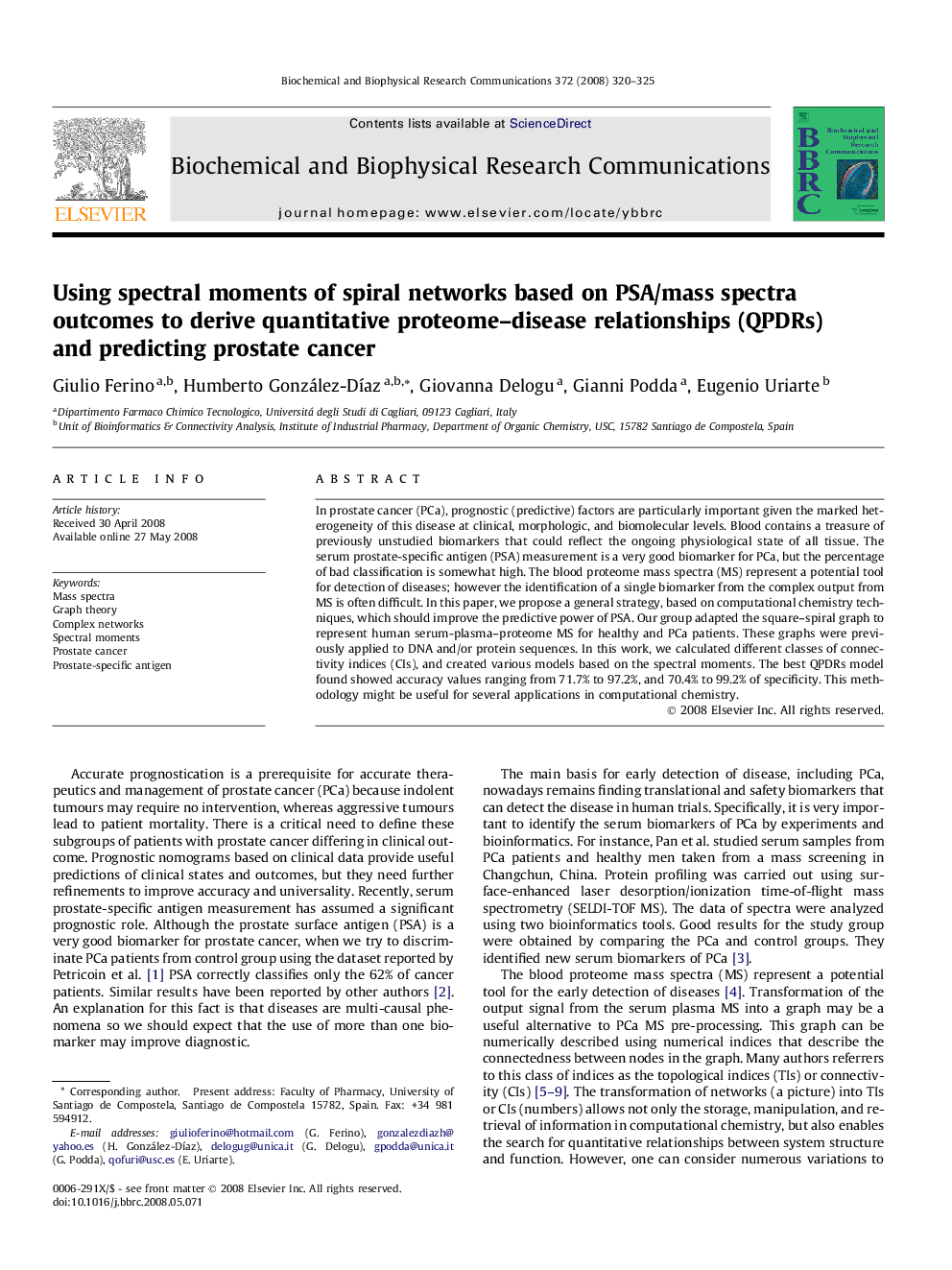| کد مقاله | کد نشریه | سال انتشار | مقاله انگلیسی | نسخه تمام متن |
|---|---|---|---|---|
| 1935478 | 1050666 | 2008 | 6 صفحه PDF | دانلود رایگان |

In prostate cancer (PCa), prognostic (predictive) factors are particularly important given the marked heterogeneity of this disease at clinical, morphologic, and biomolecular levels. Blood contains a treasure of previously unstudied biomarkers that could reflect the ongoing physiological state of all tissue. The serum prostate-specific antigen (PSA) measurement is a very good biomarker for PCa, but the percentage of bad classification is somewhat high. The blood proteome mass spectra (MS) represent a potential tool for detection of diseases; however the identification of a single biomarker from the complex output from MS is often difficult. In this paper, we propose a general strategy, based on computational chemistry techniques, which should improve the predictive power of PSA. Our group adapted the square–spiral graph to represent human serum-plasma–proteome MS for healthy and PCa patients. These graphs were previously applied to DNA and/or protein sequences. In this work, we calculated different classes of connectivity indices (CIs), and created various models based on the spectral moments. The best QPDRs model found showed accuracy values ranging from 71.7% to 97.2%, and 70.4% to 99.2% of specificity. This methodology might be useful for several applications in computational chemistry.
Journal: Biochemical and Biophysical Research Communications - Volume 372, Issue 2, 25 July 2008, Pages 320–325